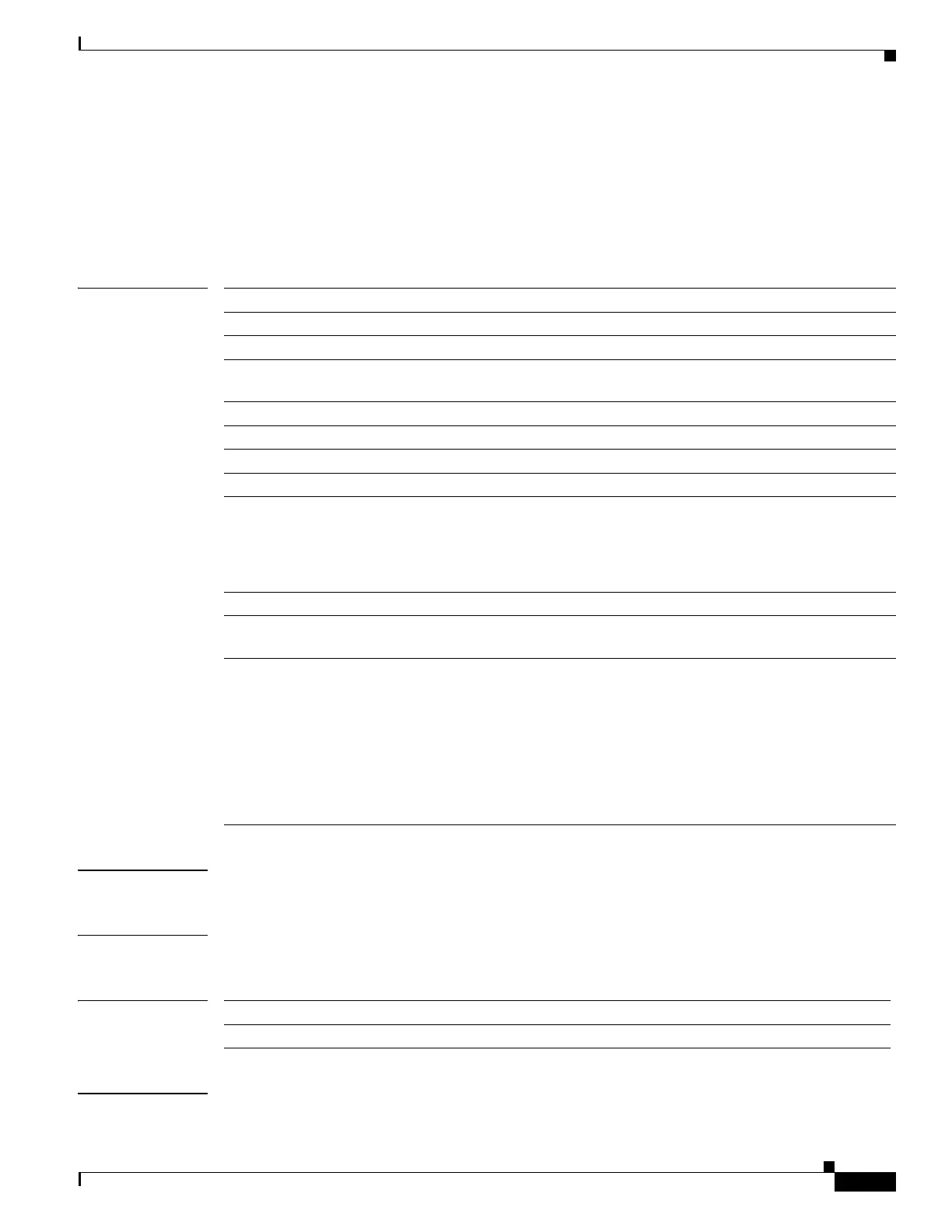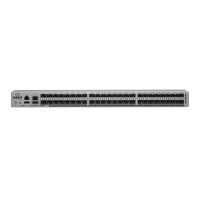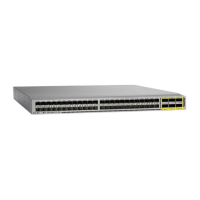509
Cisco Nexus 3548 Switch NX-OS Unicast Routing Command Reference
OL-27852-01
Chapter Unicast Routing Show Commands
show routing
show routing
To display routing information, use the show routing command.
show routing [ip | ipv4] [address | hostname | prefix | route-type | clients | hidden-nh interface type
number | next-hop addr | recursive-next-hop [addr]] [vrf vrf-instance]
Syntax Description
Command Default None
Command Modes Any command mode
Command History
Examples This example shows how to display the route table:
ip Specifies the IP address.
ipv4 Specifies the IPv4 address.
address (Optional) IPv4 address. IPv4 address format is x.x.x.x.
hostname Hostname. The name can be any case-sensitive, alphanumeric string up to 80
characters.
prefix (Optional) IPv4 prefix. IPv4 prefix format is x.x.x.x/length.
route-type (Optional) Type of route. Use ? to see the list of types.
clients (Optional) Displays the routing clients.
hidden-nh (Optional) Displays hidden next-hop information.
interface type
number
(Optional) Displays the routes for an interface. The interface can be one of the
following:
• mgmt—Management interface. The default management interface is 0.
• vlan—VLAN interface. The VLAN interface number is from 1 to 4094.
next-hop addr (Optional) Displays routes with this next-hop address. The format is x.x.x.x.
recursive-next
-hop addr
(Optional) Displays routes with this recursive next-hop address. The format is
x.x.x.x.
vrf vrf-instance (Optional) Specifies the virtual router context (VRF) instance. The VRF can be one
of the following:
• vrf-name—VRF name. The name can be any case-sensitive, alphanumeric string
up to 32 characters.
• all—Specifies all VRFs.
• default—Specifies the default VRF.
• management—Specifies the management VRF.
Release Modification
5.0(3)A1(1) This command was introduced.

